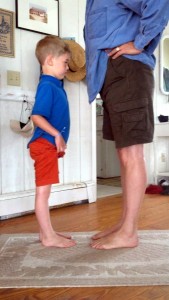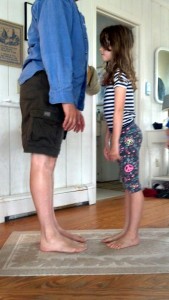Locking the knees when walking.
What do people do wrong when walking?
That is the interview question that I am asked most often.
Unfortunately, there are many options to choose from when answering.
People tend to walk like a duck, lean backward, tuck their pelvis under, and more, but this post will focus on a major issue that almost everyone should be dealing with—locking the knees when walking.
Locking the knees, or hyperextending, means to straighten the knee joint past its normal range of motion.
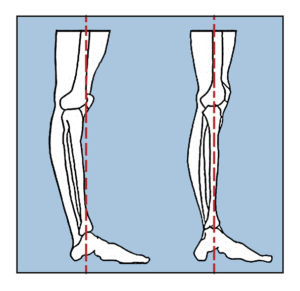
The bones of the upper and lower leg, the femur and tibia, should sit directly on top of one another.
This is a crucial factor in the transfer of weight through the body when we are standing and even walking.
When we move, the knee bends, which is normal, but what we don’t want is for the knee to move backward, or straighten too much, into hyperextension.
Walking should be accomplished with shorter steps than you might think.
A standard question that I ask clients in initial sessions is—what makes you go faster, long or short steps?
The answer I get is invariably long steps, which is incorrect.
More steps rather than longer steps will get us where we want to go in a more efficient manner.
When a runner wants to increase their pace and lengthens their stride hamstring injuries are often the result. If instead, we increase the number of footfalls we run faster.
Locking the knees can have a load of deleterious effects. This type of hyperextension can be connected to knee pain, lower back pain, neck pain, and even headaches.
Many people lock their knees while standing which needs to stop but most people don’t realize just how much they hyperextend when they walk.
Two types of hyperextension of the knees
Part of my walking program involves analyzing videos of my clients, which is a super cool feature.
There are two types of hyperextension of the knees that I see. The classic version is where the knee locks backward.
Another, maybe more interesting one which you can see in the images below is when the knee locks on the forward leg.
I refer to this as snapping the leg. Walking should be initiated from the core but all too often is initiated from the lower leg which leads to this snapping.
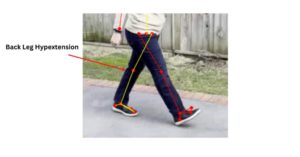
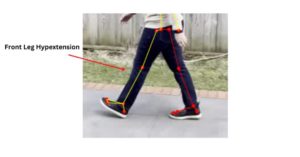
The effect of the snapping is to move the shin too far forward which creates a terrible angle between the upper and lower leg as seen in the pictures.
Whether or not one is locking their knees when walking is predicated on the length of stride that we take.
If a stride is too long there is no way to avoid hyperextension because in order to walk with a long stride the calf must move backward to propel the body forward. Only by shortening one’s strides can hyperextension be eliminated.
The first thing would be to pay attention to the way you walk in order to see if, in fact, you are locking the knees when walking. If you are locking the knees shorten your stride only enough to stop pushing the calf backward in order to move forwards and you have found an acceptable length of stride.

